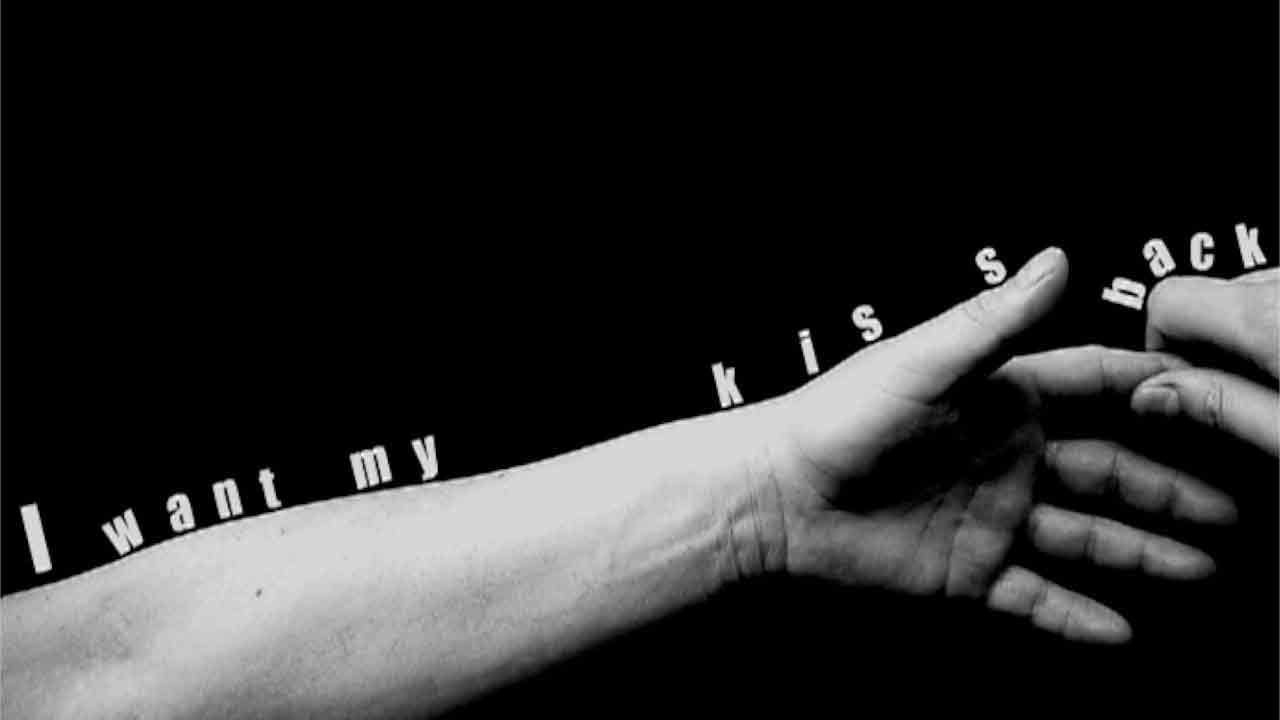Video. Touch-based communication technology.
I Want My Kiss Back narrates a day in the life of a businessman. Through this character and the naturalness of his daily life, we get an intimate approach to a futuristic society – not very distant from the current one – in which monetary transactions are made through touch, that is, by touching. The human body is declared an information vehicle, a cable through which a value can flow: money.
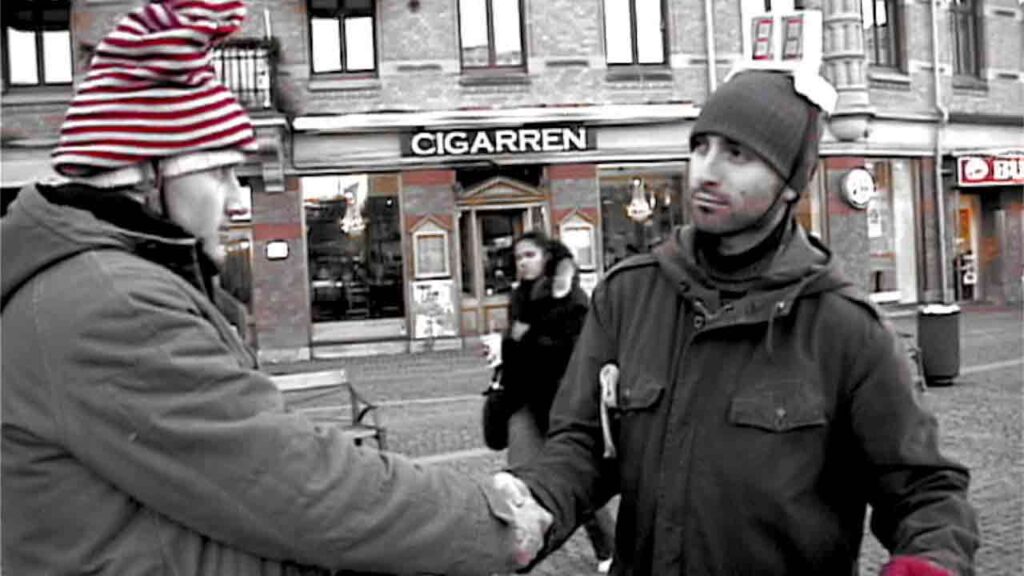
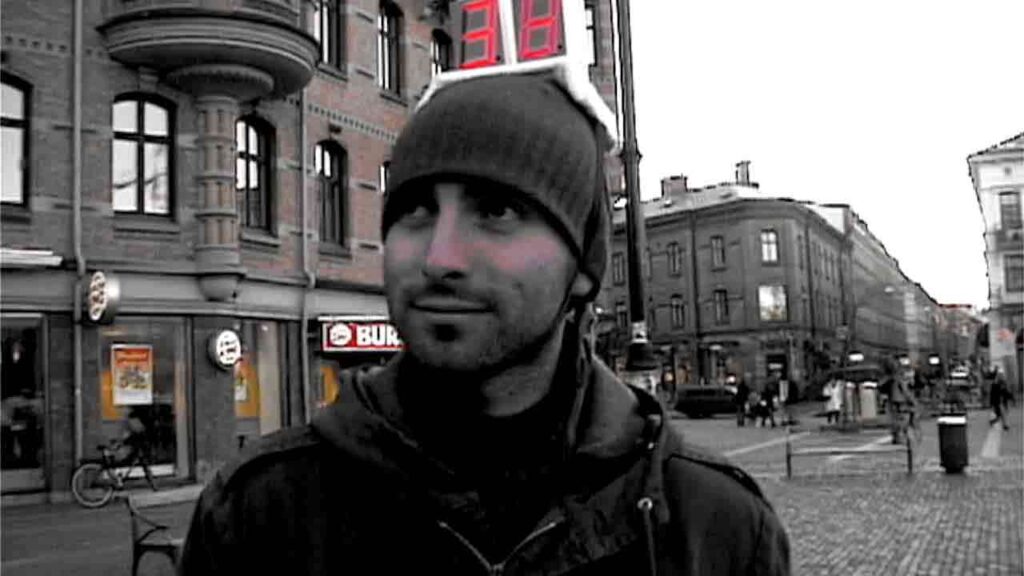
The work establishes an analogy with the myth of King Midas, who turned everything he touched into gold. In this story something similar happens: the body has the power to transmit “gold” by touching. But the ease or naturalness offered by this technology also warns us of its inconvenience. As happened to Midas, who couldn’t control what to turn into gold and what not, in this story there are moments when touching results inconvenient.
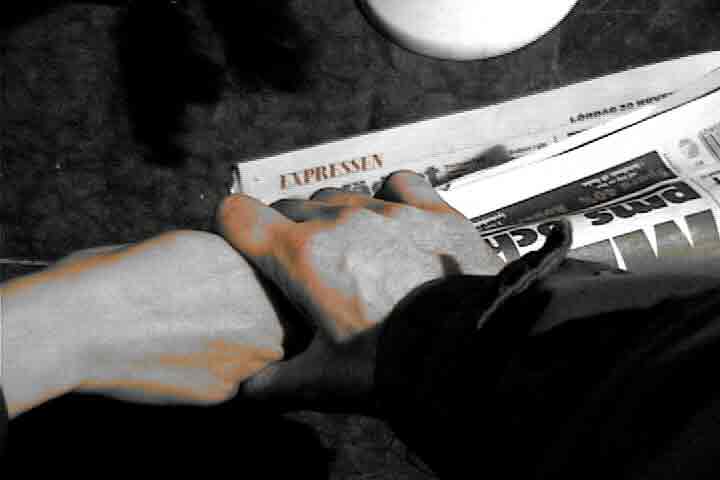
It is the tactile instances that develop the story and gradually reveal the transformation that touch and human contact have had to undergo. We witness their values being corrupted by the new value. In this, the businessman is forced to rethink his own body and its interaction with the world through touch.
He has become part of a negotiation of values. An arrangement where that which is perceived as natural, our own nature and feelings are being re-negotiated.
While one recognizes oneself and the other through touch, in this merely functional process of transmitting data, it seems that both are left unnoticed. Although maybe they are just ignored. Or maybe they are just looking for each other.
I Want My Kiss Back offers a nostalgic glance at the nature of touch at the face of the disappearing technological interface. On the one hand, there is something in the costumes of the people and in the naivety of their characters that transports us to another time. A time where carrying a height-extending top hat meant being modern. The mixing of epochs points at the long conflict between human nature and its adaptation to technological advancements.
On the other hand, the use of the silent movie format seeks to reinforce that disconnection between the act of touching and what we usually associate with it. The intertitles contribute to the narrative of the images, which can communicate an infinity of things by themselves. Here they are needed to reveal that silent control that technology exercises over our lives and over our interaction with others.
This work alerts us of possible futuristic scenarios, where our coexistence with computer systems is inevitable and requires an imminent yet thoughtful adaptation.
At the same time it highlights and reminds us that the emergence of the human nature and emotion is inescapable to the effects of touch (even if merely functional).
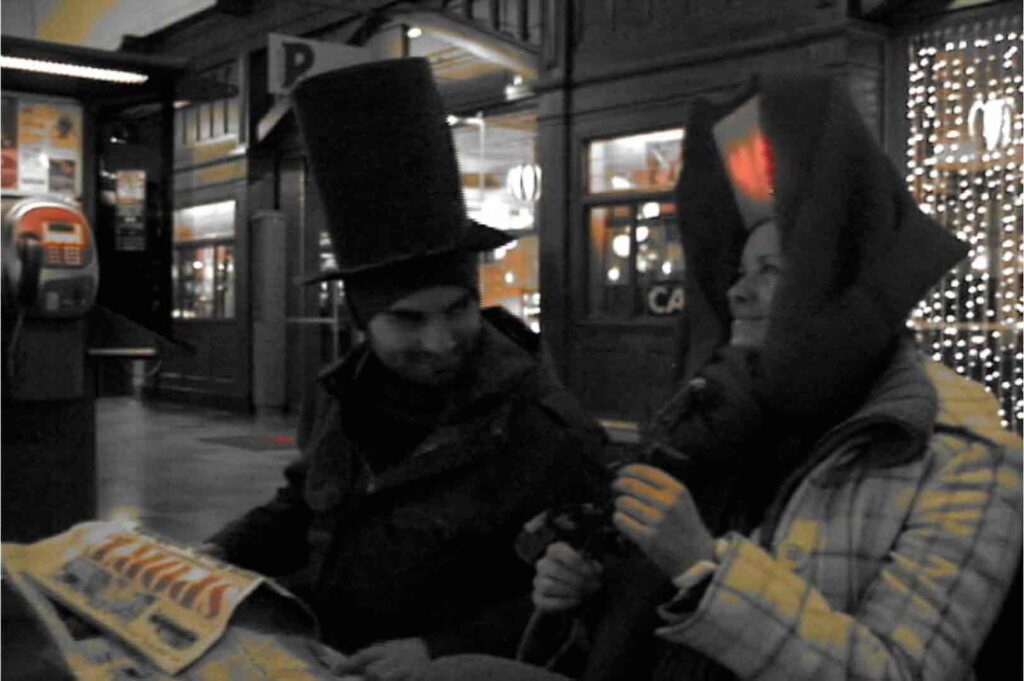
Concept and Direction: Valerie Bugmann
Technical Development: Dylan Tinlun Chan, Valerie Bugmann.
Actors: Héctor Mora, Alexandra Hedberg, Petr Bocharnikov, Sue Huang, Gabor Papp.
Camera: Valerie Bugmann, Héctor Mora.
Editing: Valerie Bugmann
2005
Presented at:
Muestra de Video Saltacharco, Galería Santafé, Bogotá – 2005
25th VIPER International Festival for Film, Video and New Media, Basel – 2005
III Muestra Monográfica de Media Art, VI Festival Internacional de la Imagen, Manizales – 2007


